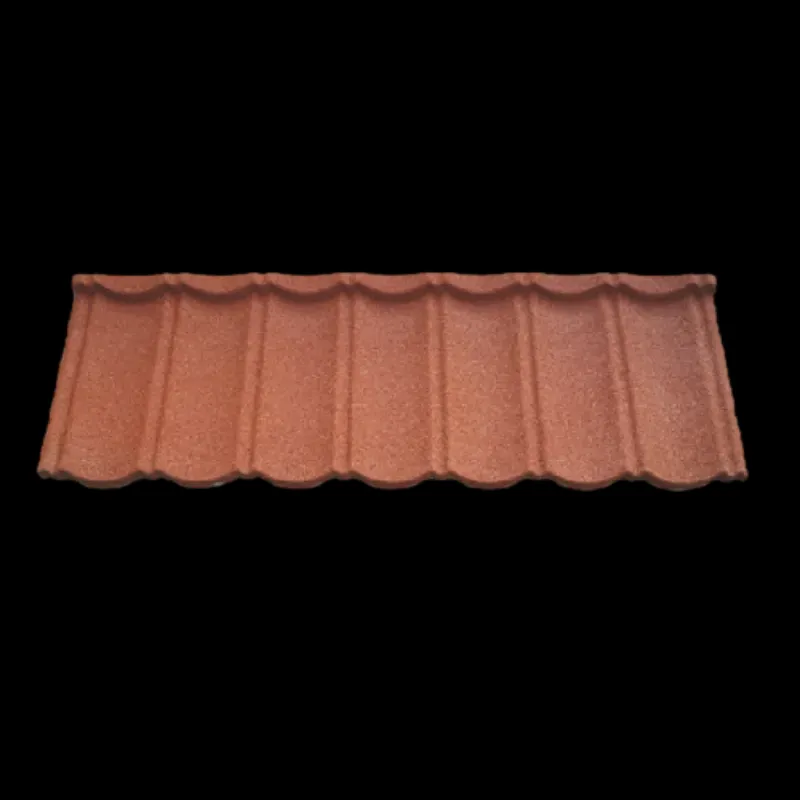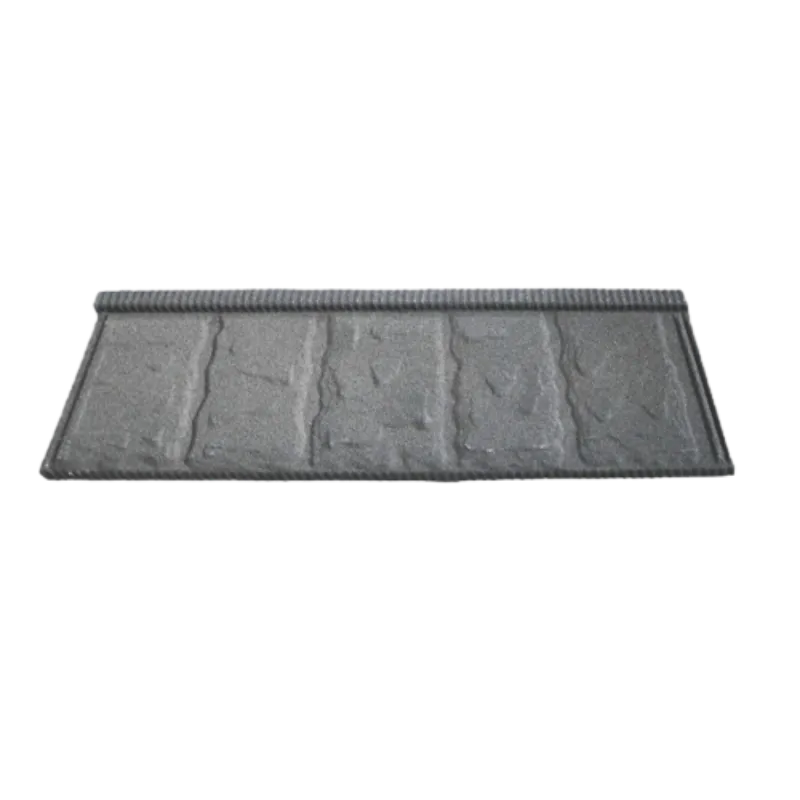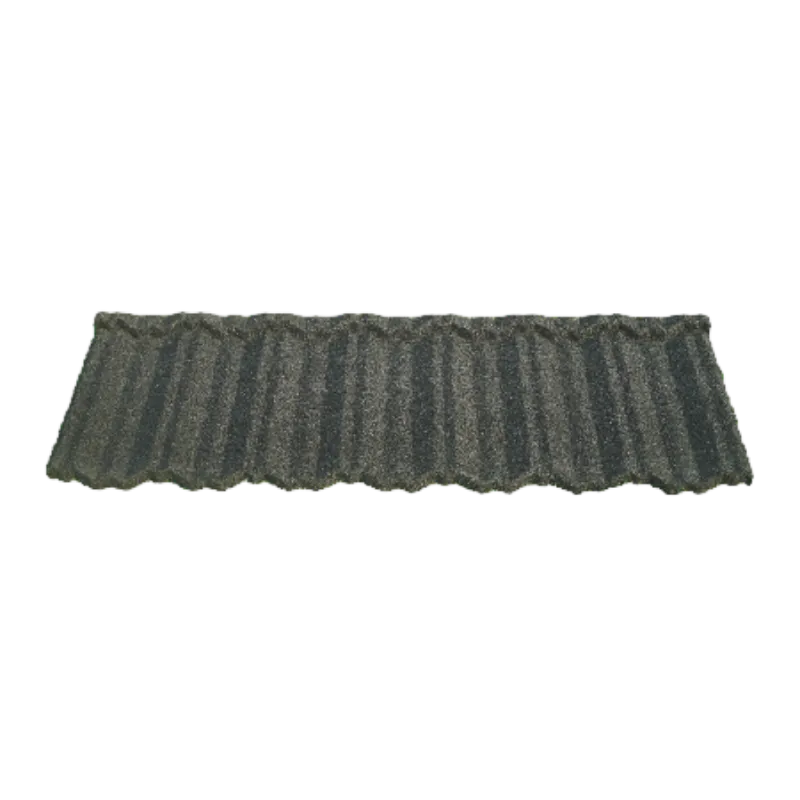
សីហា . 26, 2025 14:47 ត្រឡប់ទៅបញ្ជី
Aluma Tile Metal Roofing: Excellent Performance and Aesthetic Value Coexist
Aluma Tile Metal Roofing, as an advanced building material, is highly favored for its outstanding performance and diverse aesthetic designs. It not only provides reliable protection for buildings, but also enhances the overall visual effect, becoming an increasingly popular choice in modern architecture. This article will explore the various advantages of Aluma Tile Metal Roofing and analyze its application value in modern architecture.

The most significant advantage of Aluma Tile Metal Roofing is its excellent durability
Because it is made of high-quality aluminum alloy, aluminium step tiles roofing sheet has excellent corrosion resistance and can resist various adverse weather, such as strong wind, rainstorm, hail and ultraviolet radiation. Compared to traditional tile or asphalt roofs, Aluma Tile is less prone to cracking, deformation, or fading, greatly reducing maintenance costs and extending its service life. This durability makes it a wise choice for long-term investment, providing reliable and long-lasting protection for buildings.
In addition to durability, Aluma Tile Metal Roofing also has excellent energy-saving performance
Aluminum alloy materials have high reflectivity and can effectively reflect solar radiation, reducing heat absorption inside buildings. This helps to reduce the frequency of air conditioning usage, thereby saving energy and lowering energy costs. In addition, aluminium tile roofing sheet are typically designed with ventilation to promote air circulation, further reduce roof temperature, and improve indoor comfort. This energy-saving feature not only meets the modern society's pursuit of environmentally friendly buildings, but also brings practical economic benefits to the owners.
In terms of aesthetics, Aluma Tile Metal Roofing offers a wide range of choices
Manufacturers can provide aluminum barrel tile roofs in various colors, shapes, and textures according to different architectural styles and design requirements. From traditional antique tiles to modern metal plates with simple lines, Aluma Tile can meet various aesthetic needs. In addition, Aluma Tile Metal Roofing typically uses a concealed fixing system to avoid exposing screws, resulting in a cleaner and neater roof appearance. This aesthetic appeal makes it an important factor in enhancing the overall value of the building.
Although Aluma Tile Metal Roofing has many advantages, its cost is relatively high and installation requires professional skills and equipment
Therefore, when choosing an aluminum clay tile roof, it is necessary to consider the budget, building characteristics, and long-term benefits comprehensively. Choosing an experienced installation team is crucial to ensure the correct installation and optimal performance of the roof.
In summary, Aluma Tile Metal Roofing has become an ideal choice in modern architecture due to its outstanding durability, energy-saving performance, and diverse aesthetic designs. It not only provides reliable protection for buildings, but also enhances the overall value and attractiveness of the building. With the continuous advancement of technology and the gradual reduction of costs, Aluma Tile Metal Roofing is expected to play a more important role in the future field of architecture.
Aluma Tile Metal Roofing FAQs
What is Aluma Tile Metal Roofing?
Aluma Tile is a lightweight and durable metal roof tile typically made of Aluminum Magnesium alloy or Galvalume steel plate ®) Made to mimic traditional clay tiles, slate tiles, or wooden tiles in appearance, but lighter and more corrosion-resistant, suitable for various climatic conditions.
What are the advantages of Aluma Tile compared to traditional metal roofs such as vertical seam panels?
Aesthetics: Imitating traditional tile design to enhance the visual effect of the building.
Lightweight: lighter than concrete tiles or slate tiles, reducing structural load-bearing pressure.
Corrosion resistance: Aluminum magnesium alloy is corrosion-resistant and suitable for coastal or high humidity areas.
Easy installation: The tile style design is easier to install than the vertical seam metal plate, and some systems can be DIY.
What is the lifespan and warranty period of Aluma Tile?
Lifespan: Typically 4050 years (depending on the substrate, such as aluminum zinc coated steel plate or pure aluminum).
Warranty: High quality brands offer a limited warranty of 3050 years (covering material defects and coating peeling).
Is Aluma Tile suitable for all roof slopes?
Usually, a minimum slope of 3:12 (i.e. 12 inches horizontally and 3 inches vertically) is required to ensure drainage.
Low slope roofs require an additional waterproof layer (such as self-adhesive film) to prevent leakage.
High slope roofs (such as 6:12 or above) are safer to install and have better drainage effects.
Is the maintenance cost of Aluma Tile high?
Low maintenance: No need for regular replacement like asphalt shingles, only occasional cleaning of fallen leaves and inspection of fasteners.
Anti extreme weather: resistant to hail and strong winds (some products comply with UL 2218 Class 4 impact resistance standards).
Coating maintenance: such as surface coating (PVDF or Kynar) ®) Aging, can be partially repaired without the need for overall replacement.
-
Architectural Asphalt Shingles: Integration of Practicality, Economy, And Aesthetics
ព័ត៌មានAug.26,2025
-
The Importance of Bird Stop for Metal Roofing
ព័ត៌មានAug.26,2025
-
Roofing Granule: Composition, Function, and Application
ព័ត៌មានAug.26,2025
-
Granular Roll Roofing: Diverse Application Scenarios and Values
ព័ត៌មានAug.26,2025
-
Asphalt Shingles: a Long-Lasting Roofing Material
ព័ត៌មានAug.26,2025







